Flower bell sign and love many dacms for his unpretentiousness and beauty. This culture is found in the wild on the fields, steppes and meadows, however, quite often it is planted and in the country areas. It grows this simple and colorful flower in moderate latitudes of Asia, Europe, America. It is not bad to culture and in the conditions of our Russian climate. Most types of bells belong to perennial plants, however, there are also annual grades. Next, we will tell you more about the characteristics of the bell tower of the garden perennial, as well as how the planting is properly carried out.
Perennial Plants Bells: Description
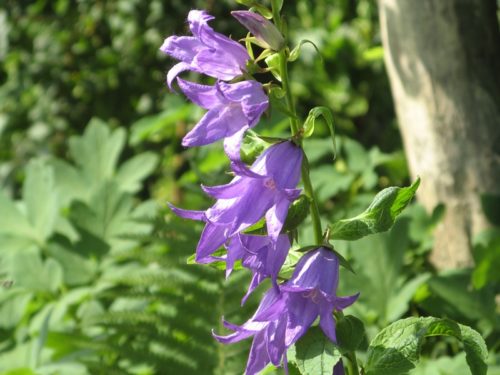
On the Latin name "bell" sounds like "Campanula". There are also some "folk" names, for example, "Chebos", "bells", "Sinelki".
This plant has its own distinctive features and characteristics:
- As mentioned above, more often, culture refers to many years of plants, however, there are annual species.
- Plant leaves are regular. Flowers have a bell shape. Depending on the culture variety, the color of flowers can vary from white to dark purple.
- Most often, the flowers are collected in the brush, however, there are also single flowers (usually their size is very large).
- Seeds of bells perennials can have a different size. For landing, only one of the largest seeds should be chosen, on which there are no different stains and traces of rot.
- The height of the bells may differ depending on the variety of culture. So, there are both short and tall trees.
Types and varieties of bells
Annual and two-year types of bells
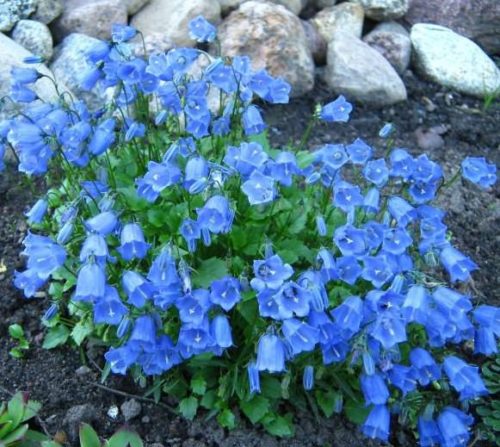
In nature, there is a huge amount of varieties of bells, each of which has aesthetic value for gardeners. All varieties of this plant can be conditionally divided into several groups. They are mainly divided by the growth period on:
- Annual.
- Two-year-old.
- Perennial.
The last group, as the most numerous varieties, in turn, is divided by the height of the plant to the low-spirited, average and lowered.
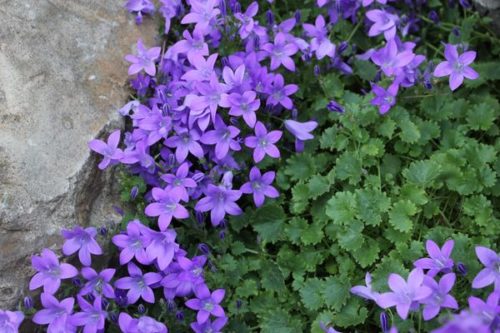
Annual bells:
- One-year bell is low. The birthplace of this plant is the Caucasian Mountains, Balkans, the plains of Malaya Asia and the Mediterranean. The low-spirited bell is perfect for the border device, as well as the decoration of the Alpinarians. The height of the low-alone annual bell rarely exceeds 10 cm. Flowers this plant grade is a gentle blue color.
- The bell long-molubic. One of the highest annual bells, which in height reaches half a meter. In Wildlife, this variety grows on the Caucasian crubppy soils. Flowers a long-molubic bell with quite large inflorescences that can with more fifty gentle blue flowers with a diameter of up to 4 cm.
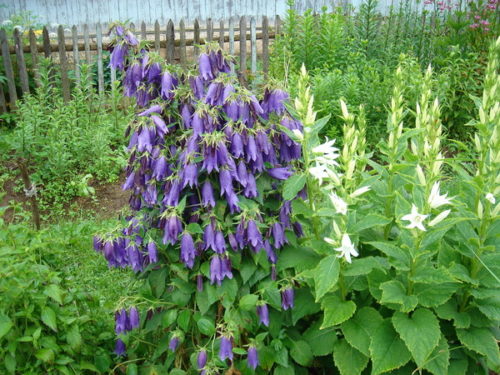
- Mirror Venus. Another popular one-air grade. It grows almost throughout Europe from the UK to the Mediterranean. It is a low plant with a height of about 30 cm, with swords of blue and lilac shade. The core of the flower is usually white. On the inflorescence of the battle view, several colors can be collected with a diameter of up to 2 cm. It blooms this grade of bells from the beginning of the summer before the beginning of autumn.
Two-year-old bells:
- Hoffman's bell. The area of \u200b\u200bits natural habitat are the Balkans and the Adriatic Sea coast. The height of the plant reaches 50 cm, the flower of a disrupting type, white or cream color.
- The bell large-haired. Reaches a height of more than 1.2 meters. Flowers, which are several pieces are collected in a muve, mainly pale purple. Plant blooms at the beginning of the middle of summer.
- Middle bell. Often, this plant grade is grown as annual. On a straight stem, whose height often exceeds 1 meter, there are flowers collected into pyramidal inflorescences up to 7 cm long. Color of inflorescences White, blue or pink.
Types of bells perennial
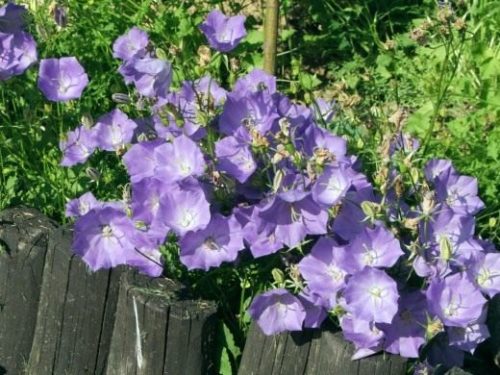
The bells are lower perennial:
- Karpat's bell. One of the most common types of perennial plants. The height of the Carpathian bell rarely exceeds 30 cm. Western fruitful stems Single flowers of the funnel-shaped mold. The color of the plant depends on the variety and happens: white (varieties of Alba and White Star), blue (Isabel), blue (blumese) or purple (carpathedane).
- Gargansky bell. A small perennial plant with a height of up to 15 cm with blue star flowers with a diameter of up to 4 cm. The most popular varieties of a long-term Garganese bell are:
- Major - Blue Multi-Year Bell;
- H. Paine - with lavender colors with white eye;
- The bell shamiso. This is a miniature view of the bells, in the height of barely reaching 8-10 cm. Flowers predominantly purple-blue color, however, there is a white colorful shape.
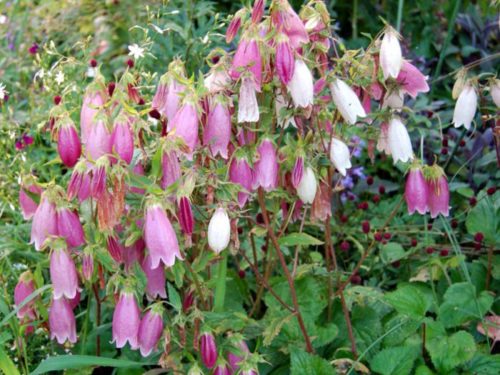
Speed \u200b\u200bspecies:
1. Takesima bell. In the wild, most often found in the Mountain Area of \u200b\u200bIran and on the Korean Peninsula. Plants Stems reach 60 cm. This kind of bell tower blooms at the beginning of summer. Long termrine balasis colors are simple or terry blue, pink or white. The most famous varieties of the balachyma bell are:
- Brututhiful trust. It is distinguished by large spider-colored flowers;
- BELZ Vedding. Flowers white terry flowers.
2. Bell Spot. It has a thin fibrous stem up to 50 cm high. It is crowned with a dilapidated bedroom-bell-bellged flowers of a dirty and white shade with purple dots. The most popular varieties:
- Rubra;
- Alba Nana.
3. Sarazro bell. Looks like your point fellow. The height of the bush is up to 60 cm, it blooms with bright purple flowers with a diameter of up to 7 cm.
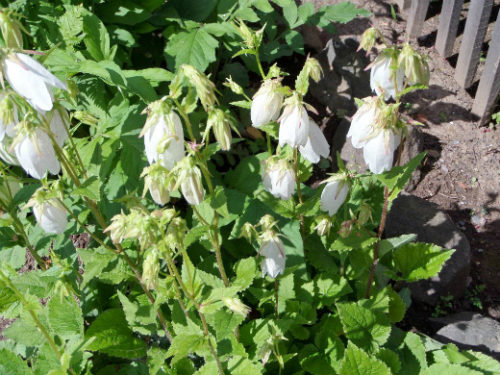
Tall bells:
- The bell is widecred. Its stem reaches a height of up to 1 meter. It grows almost throughout Europe. Prefers the shores of rivers and streams, as well as broad-sized forests. The inflorescence is a rare-flowered brush, which consists of large colors with a diameter of up to 6 cm, with a few bent blades. Watercolor bell blooms in June-August. The most popular varieties of the broad bell color:
- Alba - Bell White Perennial;
- Branchwood - light purple blossom;
- Macrand - blooms dark purple color.
- The bell is peacious. It received its name in the form of leaves resembling peach leaves. Flowers are quite large with a diameter of up to 5 cm, assembled in the blurred inflorescence. The height of the stem can reach up to 1 meter. Flowers plant from mid-June to early August. Most popular varieties:
- Bernis - with beautiful terry flowers of blue;
- Exmaus - bell terry perennial blue;
- Snowdif - white bell bell.
Bells Perennial: landing
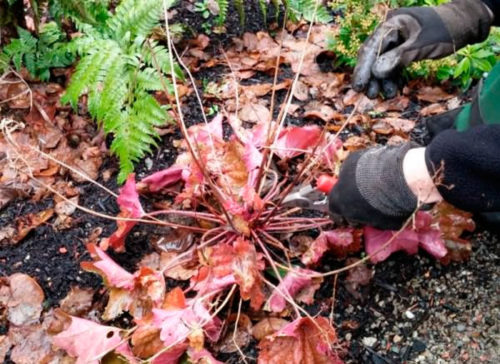
Landing perennial bells is carried out in the following order:
- First of all, seeds of bells should be prepared. This will help further improve the germination and flowering flower. For this, the seeds are placed in a container filled with a nutrient soil, as part of which should be humus and nervous land. Pre-land in the container should be disappeared and pouring. Seeds are placed on a depth of 2 cm. Then they are sprinkled with soil and watered. Seed preparation starts in March.
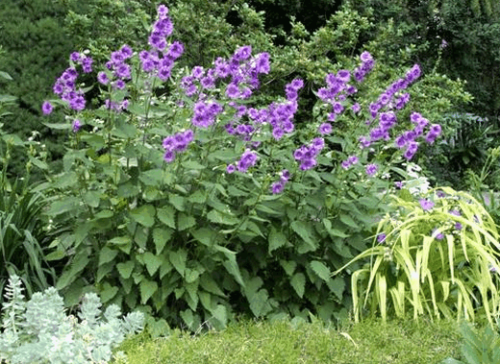
- Contain a landing container with seeds in a bright place at a temperature of 18 degrees. When the seeds are proceeded, standard emergence for seedlings should be carried out - watering, soil loosening, cutting patients with leaves. In the landing container, seedlings should be contained about 20 days, during which time they will have time to grow.
- In the open soil, seedlings are planted in the late spring or early summer. To do this, select a plot to which the sun's rays are well falling. In addition, there should be no drafts on the selected glade. The soil on the plot should be well drained, weakly alkaline.
- Then the selected area is pretty drunk to a depth of at least 20 cm.
- Further applies fertilizers, which is perfect for humus.
- Saplings are placed in the landing wells. There should be a distance of at least 15 cm between the wells.
- Next, organic fertilizers are made to the site - peat and manure.
Perennial bells: Care
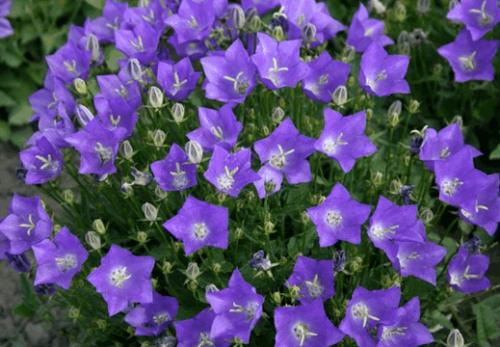
Growing care for the bells on the flowerbed is not difficult and does not differ from the care of any other flower plants. Their unpretentiousness to the soil, watering and feeding allows gardeners to get an excellent result with minimal cost:
- Bells do not need constant watering. They watered them only when the street is standing on the street.
- Watering is produced under root, not moisturizing flowers and leaves. Then a bit, the drying soil is shred with simultaneous removal of weeds.
- The fertilizer's bells hold twice in the season. First time after melting of snow, nitrogen fertilizers make. For the second feeding use complex fertilizers. Make them in the period of the bootonization of flowers.
- In order to extend the flowering of the bells, you need to remove faded flowers.
Perennial bells: reproduction
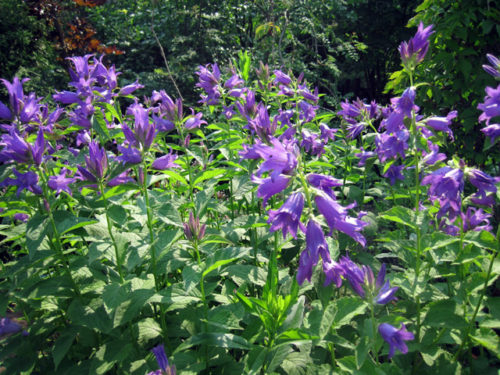
Perennial bells breed three ways:
- Seeds. This method is very complex, since with seed reproduction, bells can lose their varietal signs. This method of reproduction begins with the preparation and planting of seeds into containers with soil. When the seeds are growing, they are transplanted into open ground.
- Stalling. This method begins with the preparation of cuttings. It is held in March. Cuttings are cut from healthy young stems and planted into a container with soil. When the seedlings are allowed root, they can be transferred to the ground.
- Division. The division of the bush can be breeding the bells only since the 3rd year of life. For this, the bush of the plant is digging, and is cut into delays, which are then planted in other parts of the site.
Pests and diseases of bells perennial
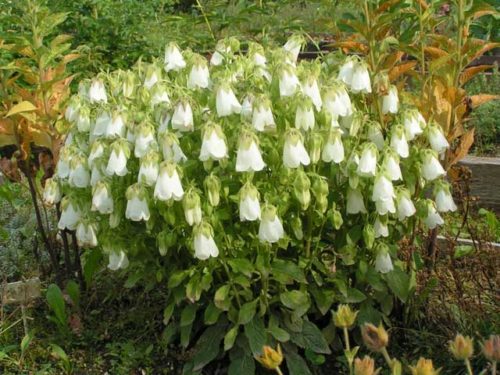
The bells, unlike many garden plants, are very unpretentious to landing and care, which is why no special efforts are required in their cultivation. The cause of the defeat of the bells with various diseases may become irregular watering, as well as the cultivation of plants in one place for a long period. Because of this, harmful bacteria can accumulate in the soil, which may cause the disease.
- Most often, the bells are amazed by such bacteria as fusarium, sclerotinia or Botritis. To combat pathogens, it is enough twice for the season (in autumn and spring) to treat a flowerbed with a 0.2% solution of Fundazola. Preferably from time to time to replant plants to a new place.
- Increased humidity can cause an appearance on the colors of the bell sharpening prisoners. This insect can easily destroy all the colors for a fairly short time. To combat it, the tincture of garlic on the water, which sprayed the bells of bells.
- Little varieties of plants threaten slugs. They often have to collect manually. Of the drugs to combat these pests, the superphosphate is very helpful, which is embanked around the stem, and from folk methods - the tincture of bitter pepper, which is searched for plants.

Care for bells with perennial after flowering
After the end of the flowering of the annual bells, they simply cut them under the root. Perennial plants in warm latitudes can be overwhelmed without shelter. In the cold climate, it is advisable to hide them with dry leaves or leaps. High varieties of bells are sleeping with a dry peat to a height of up to 20 cm.
For the preparation of seeds to sow, it is necessary to collect inflorescences, without waiting for the boxes with seeds will open. After they get sick, you can open them and extract seeds that stored before sowing in a dry warm place.


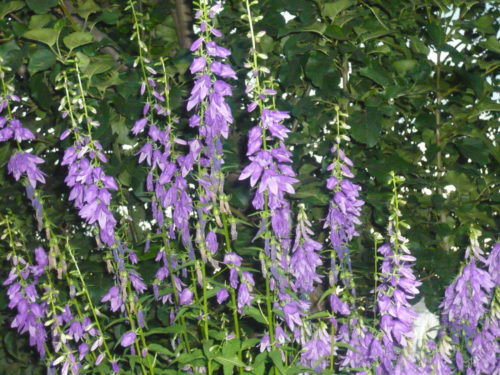
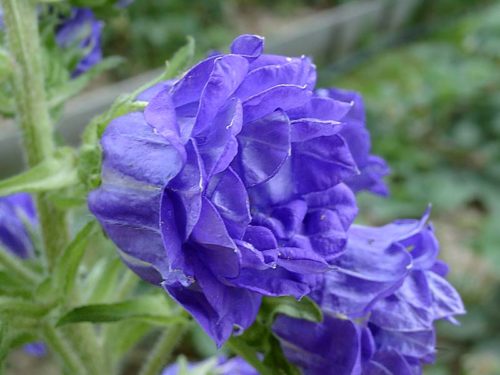
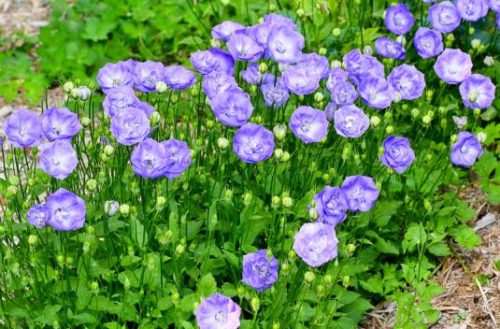
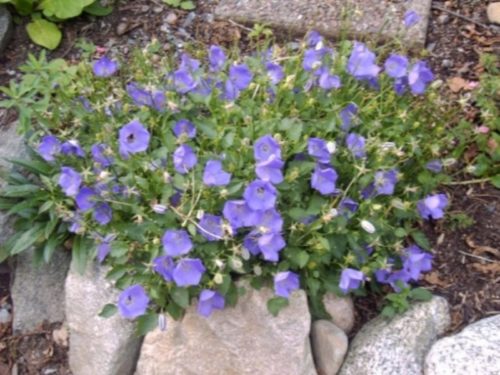












 Start a discussion ...
Start a discussion ...